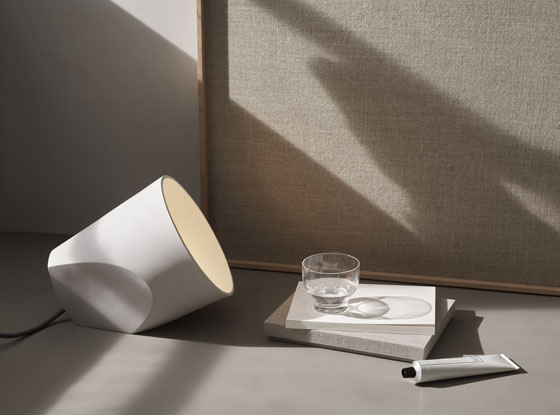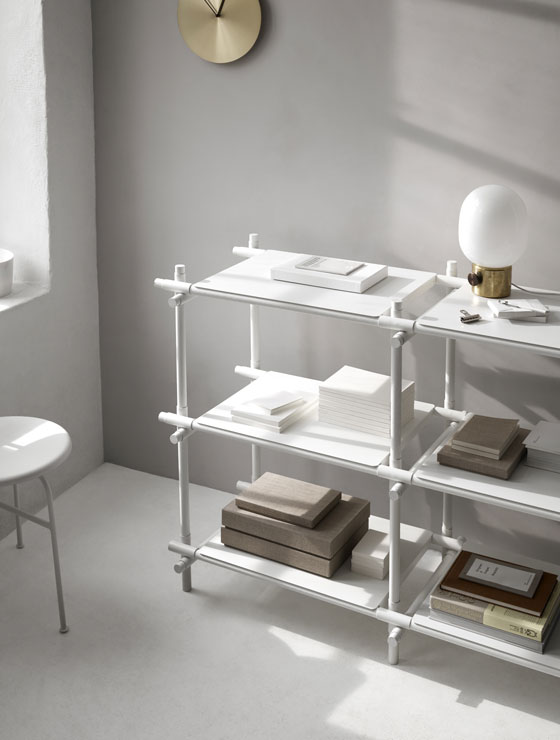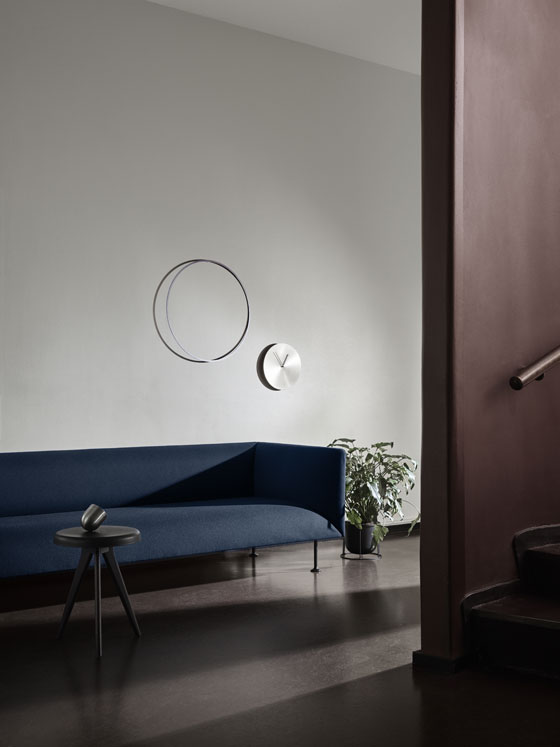Modern Talking
Brand story by Bethan Ryder
Nordhavn, Danemark
18.02.16
Having established itself, through its collaboration with an impressive international cohort of designers, as a premium accessories brand, MENU’s highly considered, new Modernism Reimagined collection successfully positions the high-end Danish manufacturer as a serious player in the lighting and furniture markets, too.
The Godot 01 sofa (top) by Copenhagen-based duo Iskos–Berlin perfectly encapsulates Menu’s “soft minimalism”. Norm Architect’s On The Edge lamp (above), offers indirect light as a pendant, floor uplighter or desk lamp
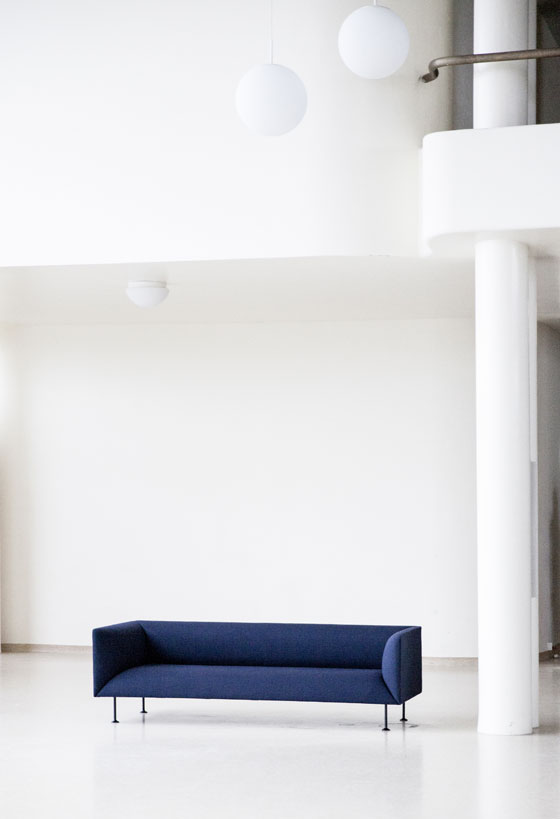
The Godot 01 sofa (top) by Copenhagen-based duo Iskos–Berlin perfectly encapsulates Menu’s “soft minimalism”. Norm Architect’s On The Edge lamp (above), offers indirect light as a pendant, floor uplighter or desk lamp
×Scandinavian design company Menu has been building momentum over the past five years, steadily transforming itself from producer of simple kitchen accessories into a fully-fledged international lifestyle brand, whose reach extends from lighting to seating and shelving.
A key force behind this expansion and repositioning is creative director Jonas Bjerre-Poulsen, co-founder of Norm Architects and a believer in design as evolution not revolution. The Modernism Reimagined collection – as its name would suggest – is about honouring the central tenets of European modernism while also capturing the essence or characteristics of what Bjerre-Poulsen calls “soft minimalism”.
The Afteroom dining chair (above), inspired by a French industrial mid-century chair, is shown here in Vilhem Lauritzen’s 1939 airport terminal with the Snaregade Table, Cube Candle Holders and GM 30 Pendant lights
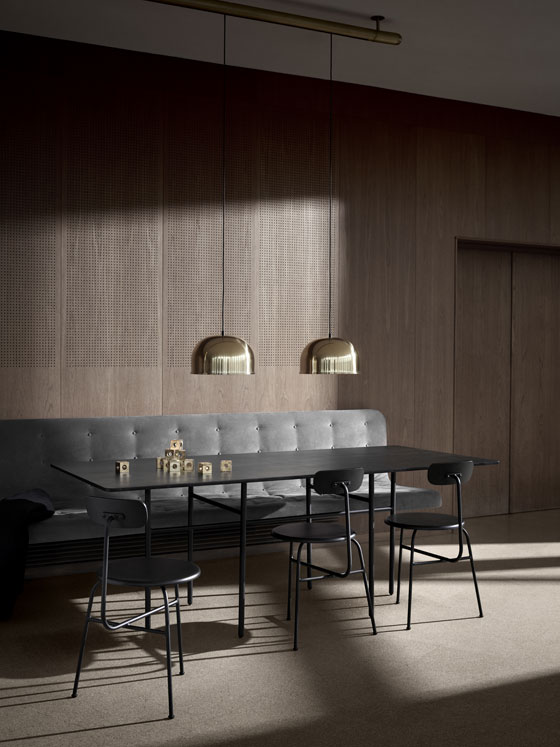
The Afteroom dining chair (above), inspired by a French industrial mid-century chair, is shown here in Vilhem Lauritzen’s 1939 airport terminal with the Snaregade Table, Cube Candle Holders and GM 30 Pendant lights
דIt’s a term we use internally at Menu to describe what may have begun as a Scandinavian aesthetic, but is actually now a universal language,” he explains. “Central European modernism morphed into functionalism in Scandinavia and it became slightly more organic, with wavy contours. Think of Alvar Aalto or Arne Jacobsen – they’re not as boxy as Mies van der Rohe. More in tune with nature, Scandinavians have a folksy, handcrafted tradition. So when that industrial style from Germany met this rustic, peasant heritage, the fusion created this special expression.”
Embracing the modernist ethos, Bjerre-Poulsen wrote a design manifesto for Menu; a useful tool as the company, in spite of its Scandinavian roots, has managed to branch out across the globe, commissioning products from a roster of 40 different designers that hail from as far afield as Taipei, Portugal and Los Angeles. “Soft minimalism isn’t regional anymore. We discover designers through social media, in magazines, and through working with stylists and photographers who understand our intrinsic approach to design and architecture,” he says.
American-Japanese design team WRK-SHP’s Tied pendant has simple utilitarian appeal. It combines a pared-back Japanese/Scandi aesthetic but with the spun cord reminiscent of American industrial production
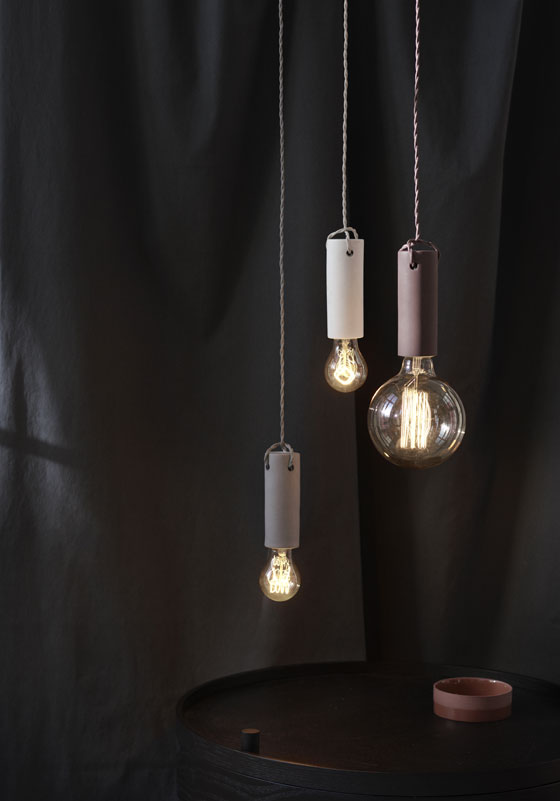
American-Japanese design team WRK-SHP’s Tied pendant has simple utilitarian appeal. It combines a pared-back Japanese/Scandi aesthetic but with the spun cord reminiscent of American industrial production
×So how does this play out? Pared-back, gentle, geometric forms exhibiting an understated but refined colour palette; Menu’s collection adheres to modernism’s guiding principle that form follows function. Hero products epitomising this approach include the versatile On the Edge lamp by Norwegian-based duo NoiDoi. Stripped back and distilled, its ceramic form is entirely driven by how it is to be used, with the distinctive diamond-cut side giving it triple purpose – enabling it to hang as a pendant but also operate as a desk lamp, or ambient uplighter. “It’s completely minimal but has enough character to stand out,” says Bjerre-Poulsen.
Stick System shelving (top) wears its construction well, the tubular framework reminiscent of functional Bauhaus industrial design. The Norm Tumbler Alarm Clock (above) is weighted to tilt face-up
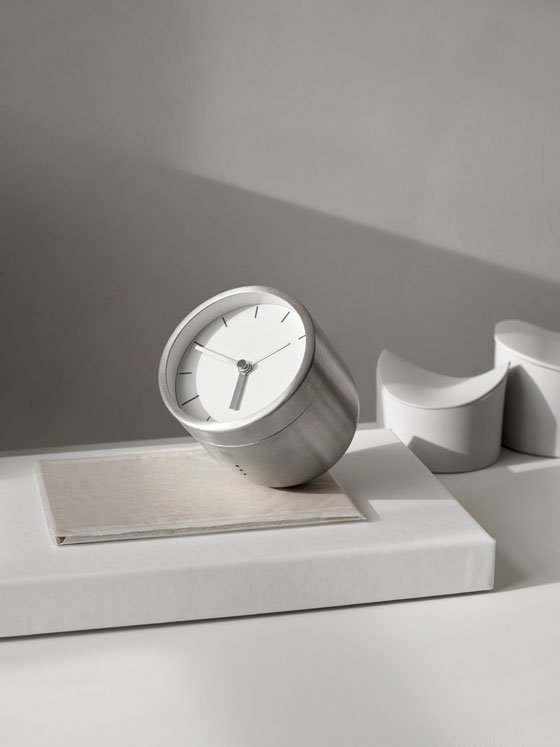
Stick System shelving (top) wears its construction well, the tubular framework reminiscent of functional Bauhaus industrial design. The Norm Tumbler Alarm Clock (above) is weighted to tilt face-up
×Meanwhile the playful Tumbler alarm clock by Norm Architects was designed to meet the changing demands of the market, as a response to the inevitable smart-phone backlash and subsequent embrace of slower, simpler methods of time management. “It’s about interactivity between the human body and the technology of the clock. Using your iPhone as a bedside clock is not good for you, so we reconsidered the alarm clock.” Poised by your bedside, face tilted upwards, it takes one shake of the ringing clock to set the snooze function, or turn it flat on its face and it switches off completely. It’s clearly a favourite of Bjerre-Poulsen’s, neatly fulfilling Menu’s aims. “We always try to ensure there is a new idea, a new production method, function, or a new combination of materials. Something that allows us to put a new product on the market rather than simply reshaping something existing – it’s not always that we succeed but sometimes we do.
Not everything is purely about function though. Some pieces pay direct homage to the masters, such as Stockholm-based Taiwanese duo Afteroom’s Lounge Chair, with its tubular steel and leather swing seat, inspired by both Breuer’s Wassily chair and the classic Thonet bentwood. Bjerre-Poulsen: “By referencing these two archetypes, you create a hybrid but it becomes something new, making it unique and iconic in its own way.
Norm Architect’s Stone lamp (above) embodies the intangible Danish concept of ‘hygge’, with its ceramic base supporting a mouth-blown glass shade that revealing the bulb and emits a glow akin to candlelight
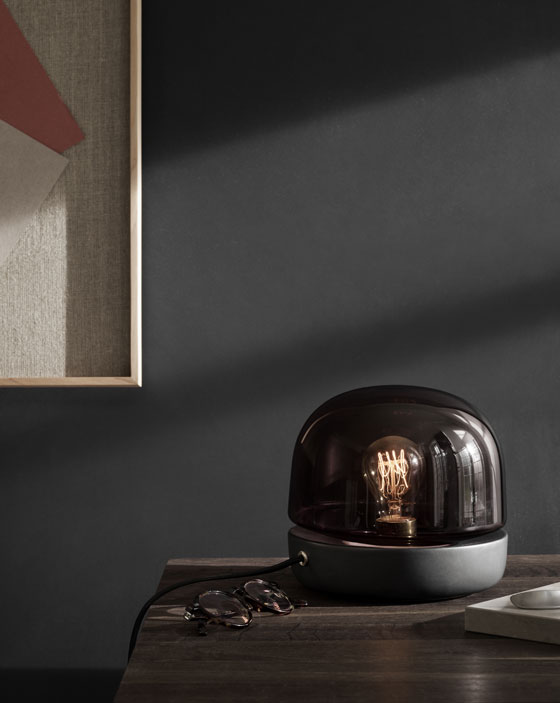
Norm Architect’s Stone lamp (above) embodies the intangible Danish concept of ‘hygge’, with its ceramic base supporting a mouth-blown glass shade that revealing the bulb and emits a glow akin to candlelight
×Other designs exemplify Adolf Loos’s denouncement of ornamentation in a perfectly honed nutshell: utterly unadorned, they simply showcase the innate quality of the natural materials. In particular the sublime Marble Wall Clock, which comes in several variations of marble. Or the new Antipode candleholder in brushed or polished brass, designed by Carsten Gollnick in different heights to allow several to be grouped together in water-lily-like compositions. “It will patinise over time; we like to let the materials speak for themselves, rather than over-designing things.”
The strength of the Menu collection is how holistically all the elements work together. Modernism Reimagined offers a powerful vision – or “universe” as Bjerre-Poulsen calls it – something that is poetically reinforced by the muted palette and Bauhaus-inspired styling and photography. The collection was shot on location in Copenhagen at Vilhelm Lauritzen’s 1939 disused airport terminal building. This iconic modernist masterpiece (which was moved in 1999 to Maglebylille and now functions as a museum) proves an evocative backdrop for the pieces. Keen to strike a balance between the hard shadows and geometric shapes present in original Bauhaus photography, Menu deliberately moved the mood on by mixing daylight with artificial light.
Søren Rose’s 1930s-inspired Harrison chandelier alludes to the same form-follows-function approach as the Afteroom Lounge Chair, which is a contemporary hybrid of Breuer’s Wassily Chair and classic Thonet bentwood
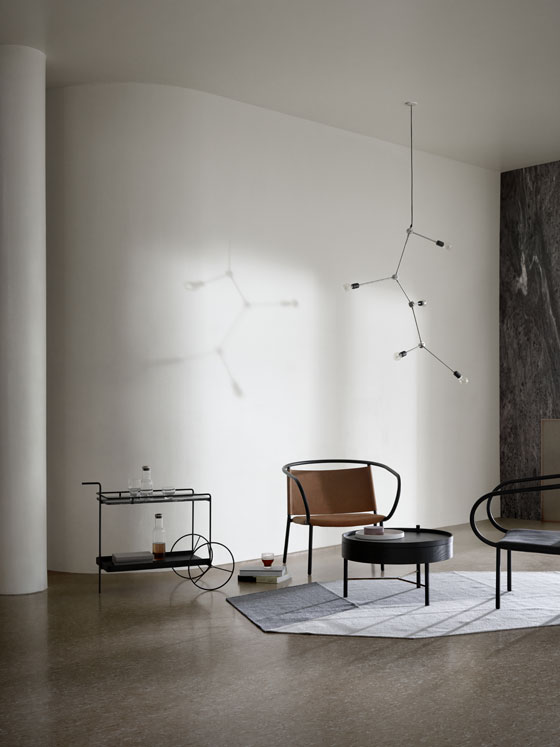
Søren Rose’s 1930s-inspired Harrison chandelier alludes to the same form-follows-function approach as the Afteroom Lounge Chair, which is a contemporary hybrid of Breuer’s Wassily Chair and classic Thonet bentwood
×Bjerre-Poulsen explains, “For a long time many Scandinavian brands have only used natural light in their photography, which leads to soft, moody, quite feminine images. But Scandinavian modernist tradition was a blend of something softer meeting a harder masculine German style, and our lighting combination reflects this.” The catalogue certainly captures this straddling of past and present; channelling modernist principles through a contemporary lens. Thanks to Menu now you can see modernism in a whole new light.


